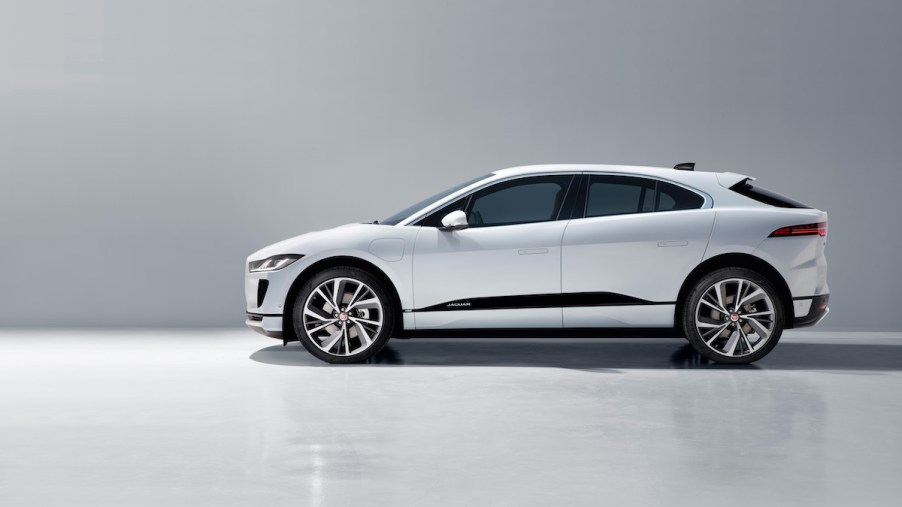
The 2020 Jaguar I-PACE Has 1 Major EV Flaw You Should Know About
Reviewers from many automotive websites rave about the Jaguar I-PACE. They like the looks, the performance, and some of the features of the all-electric Jaguar SUV. However, there’s one flaw that may or may not be a deal-breaker with this all-electric vehicle. MotorTrend points out this flaw in one of their reviews.
What the Jaguar I-PACE gets right
One of the first things you notice on the Jaguar I-PACE is the exterior’s dramatic design elements. The sharp lines and the sloping in the back of the vehicle make it unique and pleasing to the eye. Many reviewers raved about the exceptional design of this SUV, calling it one of the best looking designs they’ve seen in years.
With its gentle ride and smooth performance, the I-PACE offers plenty of thrills for the drive. It can even handle minor off-road adventures, especially on sandy or dirt paths. It keeps consistent control when taking curves and has solid stability at higher speeds.
The Jaguar I-PACE made MotorTrend’s SUV of the Year as a finalist for its performance and looks. There was one area, though, that kept it from winning the award.
Where Jaguar failed and why
The Jaguar I-PACE is impressive in many ways, but it has one concerning flaw with the driving range. EPA estimates that the I-PACE can go at least 234 miles before needing a charge.
But some reviewers had a hard time reaching that amount in their real-world testing. They came in significantly short of the estimate EPA gives us.
An Ars Technica author did a test with the 2020 Jaguar I-PACE on a few occasions to see how different elements affect the battery pack’s performance. He tested during cold and hot weather and noted other conditions relative to the drive, like mph driven and wind conditions.
Both cold and hot weather had a direct effect on the estimated drive range of the SUV.
Like your own driving habits, other factors also play a part in how much battery power you end up using during a trip. Of course, this EV falls short of other vehicles, like the Tesla Model S, which could get around 370 miles to the charge.
While range anxiety contributes to why people don’t buy all-electric vehicles, it could be lessened if you plan any long trips by where you can charge up.
Overview of the Jaguar I-PACE
According to Car and Driver‘s review of this SUV, the I-PACE has two electric motors that put out a combined 394 hp, and these work in tandem with a single-speed transmission, which comes standard on the I-PACE. There’s plenty of gusto to handle a 0 to 60 run in just four seconds.
All-wheel drive is standard with this SUV, and it comes with an adaptive air suspension system. As for driver’s assistance, one of the most useful features is All Surface Progress Control, which acts much like cruise control. It helps to maneuver the vehicle over slippery surfaces.
The Jaguar I-PACE also has a regenerative braking system, which comes with two different settings. One is a low setting, where you can set your brakes to perform more like a gasoline-powered vehicle. The other is a high setting for the times when you need more advanced braking.
The Jaguar I-PACE has it all when it comes to performance and its exterior design. The one flaw is with the driving range and coming up short to the posted estimate of 234 miles. But it may not be much of an issue if you drive on routes with enough charging stations along the way.


